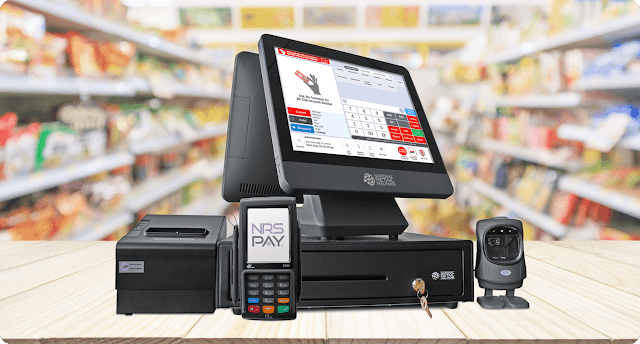operating cash flow formula
The cash flow is not very complex in theory — it's a function of how money flows into and out of your company. Still, the convenience stops there for most small business owners. Calculating a calculation for cash flow is separate from accounting for sales or expenditures alone. There's even more to it, and that's when other businesses get lost in the weeds.
However, particularly for small businesses, cash flow is also one of the most important ingredients which contributes to the financial health of your company. So much so that one survey found that 30 percent of companies collapse when the owner runs out of capital and 60 percent of small business owners do not feel competent in accounting or finance. After all, you'll need cash to compensate them as bills are out.
Cash flow formula:
Free Money Balance = Net Interest + Depreciation / Amortization – Increase in Working Capital – Capital Expenditure Total Funds Flow = Economic Profit + Depreciation – Taxes + Increase in Working Capital Balance Forecast = Starting Financial + Projected Inflows – Projected Outflows = Ending Cash Flow Forecast.That's why any company owner wants to build a cash flow understanding of what this entails for their company. The three cash flow calculations below make it easy to get the image of your financial sector and appreciate more how money moves into and out of your company.
1. Free cash flow formula
Free cash flow (or FCF), is one of the most popular and relevant cash management methods. Although a conventional cash balance analysis (like the sort you might receive through Wave reports) provides you with a representation of the cash in the company at a specific moment, it doesn't really help with preparation and budgeting — because it doesn't actually represent the cash you have at the fingertips or ready to use. Could you spend in the latest software? Will you have the cash on hand to pay for this virtual assistant when their invoice is due? How much cash are you able to use on your custom thank you cards? Calculating the cash you have at your fingertips to use (via the FCF formula) helps address those and other questions.Free cash flow (or FCF), is one of the most popular and relevant cash management methods.
Although a conventional cash balance analysis (like the sort you might receive through Wave reports) provides you with a representation of the cash in the company at a specific moment, it doesn't really help with preparation and budgeting — because it doesn't actually represent the cash you have at the fingertips or ready to use.
Could you spend in the latest software? Will you have the cash on hand to pay for this virtual assistant when their invoice is due? How much cash are you able to use on your custom thank you cards? Calculating the cash you have at your fingertips to use (via the FCF formula) helps address those and other questions.
Free Cash Flow = Net profit + Depreciation / Amortization – Increase in Working Capital – Capital Spending Let's take a peek at a real-world illustration of the calculation. Randi's a professional graphic designer — she has to measure her daily cash balance and see whether it's financially viable and employ a virtual assistant (10 hours a month) to manage company admin duties.
Net income = $80,000 Depreciation / Amortization = $0 Change in Working Capital = – $10,000 Capital Expenditure = $2,500 (Randi purchased a new iMac last year)
The free cash flow of Randi is described by: [$80,000] + [$0] – [$10,000] – [$2,500] = $67,500, which implies she has $67,500 in cash available to reinvest back into her company. Looking for more information on the framework for Free Cash Flow?
2. Operating cash flow model Though free cash flow provides you a clear indication of the funds available to spend in the company, the most precise image of the regular, daily cash flow is not often shown. That's because it doesn't allow for erratic expenditures, income, or expenditure in the FCF model. If you sold a big asset your free cash flow will go up a lot — but this doesn't represent your business ' normal cash flow. If you need a clearer understanding of the normal cash flow for your company, you ought to use the cash flow (OCF) model for operations.
For eg, if you're trying to raise funding outside of a bank or venture capital company, they're most likely to be involved in the cash flow from activities. The same goes if you are collaborating with an accountant or financial planner — but before finding money, it's important to consider what OCF looks like to you.
How to measure operational cash flow: Much as our free cash flow equation above, you'll want to get the balance sheet and financial statement set, so you can take out the figures involved with the cash flow process. For this measure, there is another financial factor you would need to remember. Taxable profits: Commonly referred to as earnings before interest and taxes (or EBIT) and benefit, the operational profits excludes operating costs (such as salaries earned and the cost of products sold) from gross sales. Operating profits can be reported in the Tax Report.
The simple OCF calculation is: Operating Cash Flow = Operating Income + Depreciation – Taxes + Change in Working Capital To extend the OCF calculation to our previous illustration (Randi, our beloved freelance graphic designer), let's presume her financials look like this for the year: Operating Profit = $85,000 Depreciation = $0 Taxes = $9,000 Change in Working Capital = – $10,000 Randi's working cash float.
3. Cash flow prediction calculation Though both FCF and OCF give you a decent picture of cash flow in a specified time period, that's not really what you need when it comes to potential planning. That's why it's a smart idea to estimate the cash position for the next month or quarter and help you fully grasp how much cash you'll have on hand instead.
Cash flow issues are never pleasant (remember that they are responsible for a vast majority of small business failures), and it's crucial to maintain a stable cash balance before the investment begins.
When to measure your cash flow prediction: It's probably one of the simplest ways to determine your cash flow prediction. There are no complicated mathematical concepts involved — it's only a straightforward estimate of the cash you're going to get in and invest the next 30 to 90 days (usually) around. The calculation looks like this: Cash Flow Projection = Beginning cash + Expected Inflows = Ending cash.
Of course, beginning cash is how much cash your company has on hand today — and you can take the amount from your cash flow statement right away. Project inflows are the cash that you plan to obtain during the specified timeframe. That involves current invoices coming due and possible invoices on which you plan to submit and collect payment. Plan outflows are the costs and other expenditures that you are supposed to create during the specified timeline.
Going back to our illustration of Randi, let's presume she has: beginning cash = $30,000 Expected inflows over the next 90 days = $30,000 Planned outflows over the next 90 days = $4,000
As a small business owner, measuring cash flow figures might not be what gets you worked up — but running short of cash is not a problem that any company owner needs to tackle. Keeping track of cash flows in and out of your company ensures you have a more holistic view of the financial stability of your firm. You will predict and fix cash flow challenges before they strike so you can automate the processes to render cash flow woes a thing of the past.
Read More:-



Comments
Post a Comment